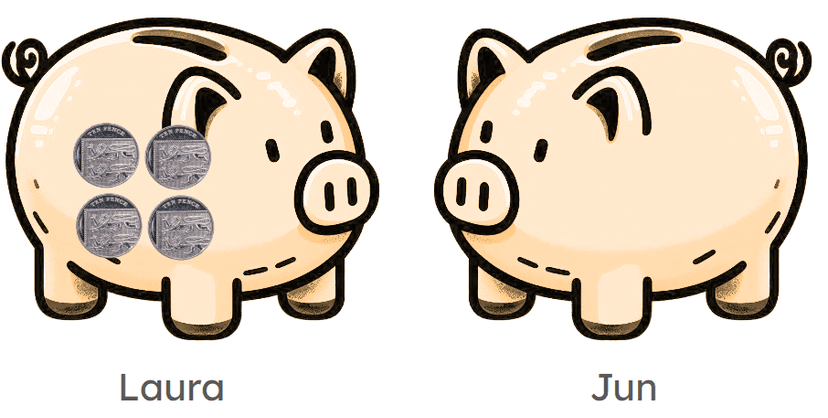Myths about teaching can hold you back
- Year 2
Explain patterns and relationships between the 5 and 10 times tables
I can explain the patterns and relationships between the 5 and 10 times tables
- Year 2
Explain patterns and relationships between the 5 and 10 times tables
I can explain the patterns and relationships between the 5 and 10 times tables
These resources will be removed by end of Summer Term 2025.
Switch to our new teaching resources now - designed by teachers and leading subject experts, and tested in classrooms.
These resources were created for remote use during the pandemic and are not designed for classroom teaching.
Lesson details
Key learning points
- When we multiply the same factor by 5 and 10, the product of the factor × 10 is double the product of the factor x 5
- When we multiply the same factor by 5 and 10, the product of the factor × 5 is half of the product of the factor × 10
- When the products are the same, the factor × 5 is double the factor × 10
- When the products are the same, the factor × 5 is half of the factor × 10
Keywords
Factor - A factor is a number which exactly divides another whole number.
Product - A product is the result of two or more numbers multiplied together.
Double - To become twice as many / to multiply by two.
Half - One of two equal parts of a whole. / To divide into two equal parts.
Common misconception
Children may incorrectly double or halve to find the missing products or factors.
The use of counters or visuals will help children to see the relationship between 10 and 5 in each context and support them to know when they must use doubling and when they must use halving.
To help you plan your year 2 maths lesson on: Explain patterns and relationships between the 5 and 10 times tables, download all teaching resources for free and adapt to suit your pupils' needs...
To help you plan your year 2 maths lesson on: Explain patterns and relationships between the 5 and 10 times tables, download all teaching resources for free and adapt to suit your pupils' needs.
The starter quiz will activate and check your pupils' prior knowledge, with versions available both with and without answers in PDF format.
We use learning cycles to break down learning into key concepts or ideas linked to the learning outcome. Each learning cycle features explanations with checks for understanding and practice tasks with feedback. All of this is found in our slide decks, ready for you to download and edit. The practice tasks are also available as printable worksheets and some lessons have additional materials with extra material you might need for teaching the lesson.
The assessment exit quiz will test your pupils' understanding of the key learning points.
Our video is a tool for planning, showing how other teachers might teach the lesson, offering helpful tips, modelled explanations and inspiration for your own delivery in the classroom. Plus, you can set it as homework or revision for pupils and keep their learning on track by sharing an online pupil version of this lesson.
Explore more key stage 1 maths lessons from the Doubling, halving, quotative and partitive division unit, dive into the full primary maths curriculum, or learn more about lesson planning.

Licence
Prior knowledge starter quiz
6 Questions
Q1.2 x 5 = 10, so 2 x 10 = ___
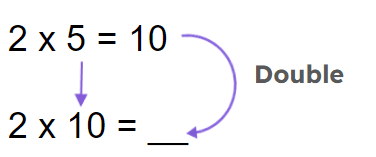
Q2.8 x 10 = 80, so 8 x 5 = ___
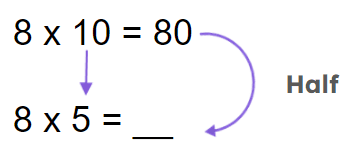
Q3.6 x 10 = 60, so 3 x 10 =
Q4.3 x 10 = 30, so 3 x 5 =
Q5.Jacob throws 6 bean bags into the ‘5 points’ bucket and scores 30 points. Sofia throws all 6 of her bean bags into the ‘10 points’ bucket. How many points did she earn in total?
Q6.Jacob throws 4 bean bags into the ‘10 points’ bucket and scores 40 points. Sofia throws all 4 of her bean bags into the ‘5 points’ bucket. How many points did she earn in total?
Assessment exit quiz
6 Questions
Q1.5 x 5 = 25, so 5 x 10 =
Q2.7 x 10 = 70, so 7 x 5 =
Q3.Who has more money, Sofia or Jacob?
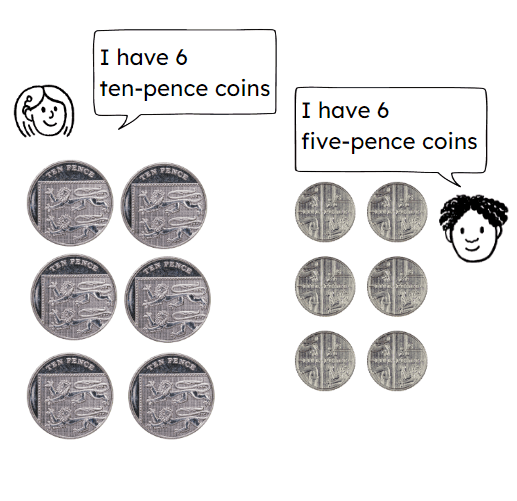
Q4.How much money does Jacob have?
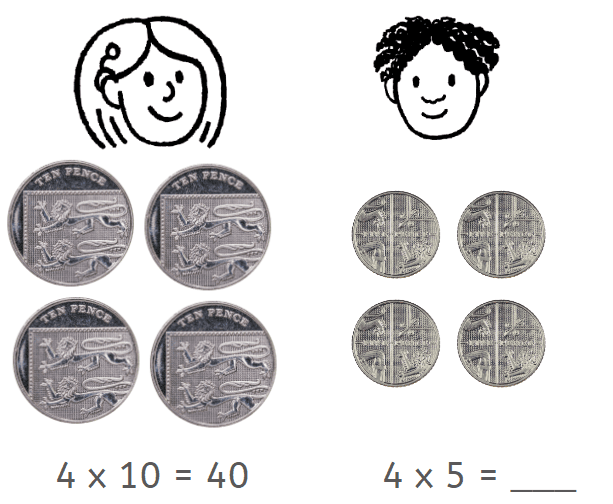
Q5.How many fives will be equal to 3 tens?

Q6.Laura has 4 ten-pence coins. Jun has some five-pence coins. They both have the same amount of money. How many five-pence coins does Jun have?
